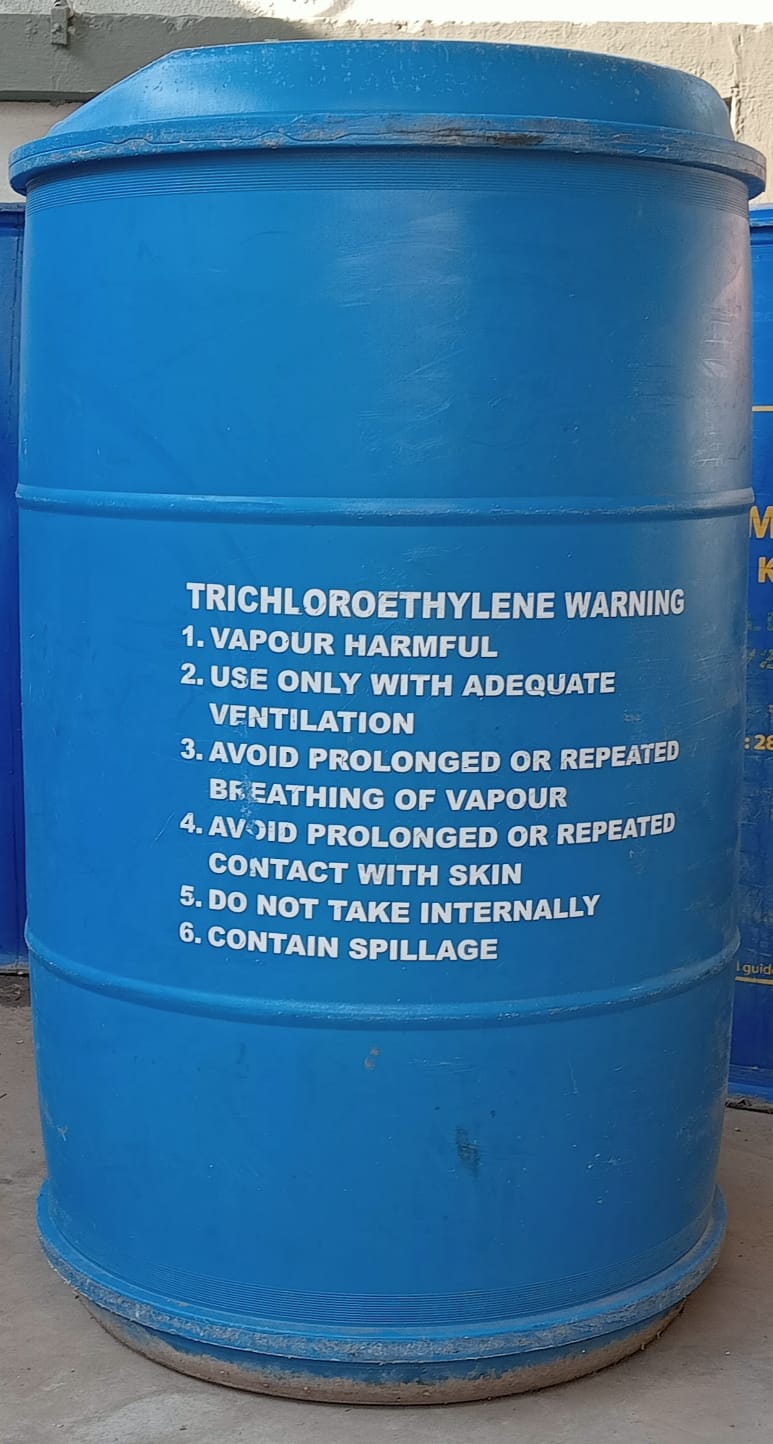
2024-09-19T12:27:57
Trichloroethylene (TCE) is a halocarbon with the formula C2HCl3, commonly used as an industrial metal degreasing solvent. It is a clear, colourless, non-flammable, volatile liquid with a chloroform-like pleasant mild smell[3] and sweet taste.[9] Its IUPAC name is trichloroethene. Trichloroethylene has been sold under a variety of trade names. Industrial abbreviations include TCE, trichlor, Trike, Tricky and tri. Under the trade names Trimar and Trilene, it was used as a volatile anesthetic and as an inhaled obstetrical analgesic. It should not be confused with the similar 1, 1, 1-trichloroethane, which was commonly known as chlorothene. History The earliest record of trichloroethylene synthesis dates back to 1836. It was obtained from the action of potassium hydroxide on 1, 1, 2, 2-tetrachloroethane and 1, 1, 1, 2-tetrachloroethane by Auguste Laurent and notated as C4HCl3 (then the atomic weight of carbon was thought to be the half of it really was). Laurent did not investigate the compound further.[10][11] Trichloroethylene's discovery is widely attributed to E. Fischer who made it in 1864 via the reduction of hexachloroethane with hydrogen. Fischer investigated TCE and noted its boiling point as between 87 and 90 degrees Celsius.[12][13][14] Commercial production began in Germany, in 1920 and in the US in 1925.[15] The use of trichloroethylene in the food and pharmaceutical industries has been banned in much of the world since the 1970s due to concerns about its toxicity. Legislation has forced the replacement of trichloroethylene in many processes in Europe as the chemical was classified as a carcinogen carrying an R45 risk phrase, May cause cancer. Many degreasing chemical alternatives are being promoted such as Ensolv and Leksol; however, each of these is based on n-propyl bromide which carries an R60 risk phrase of May impair fertility, and would not be a legally acceptable substitute.

Have a question? Ask here!
Required fields are marked *